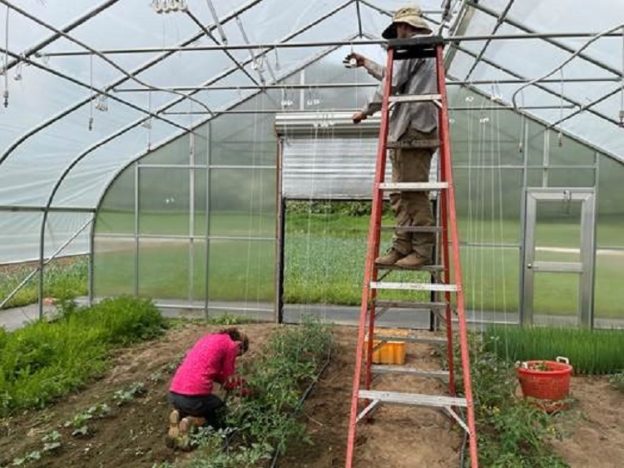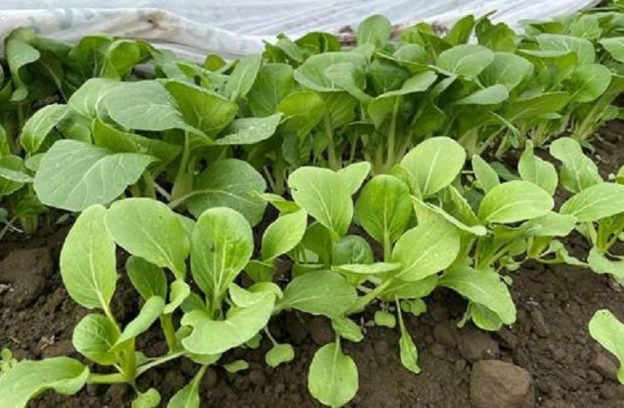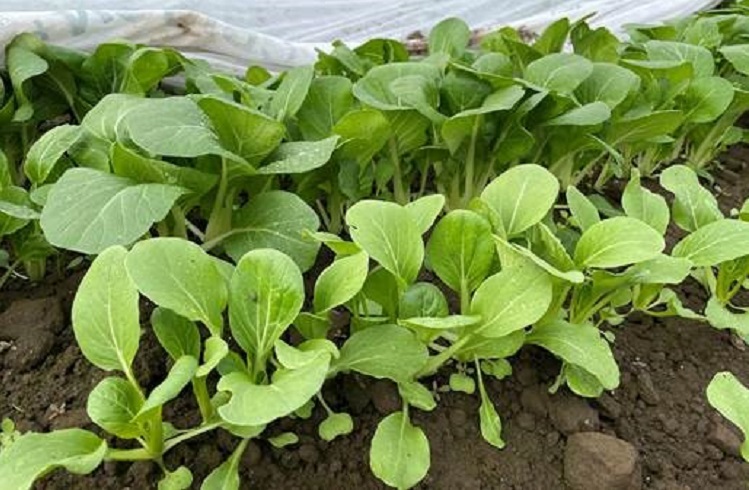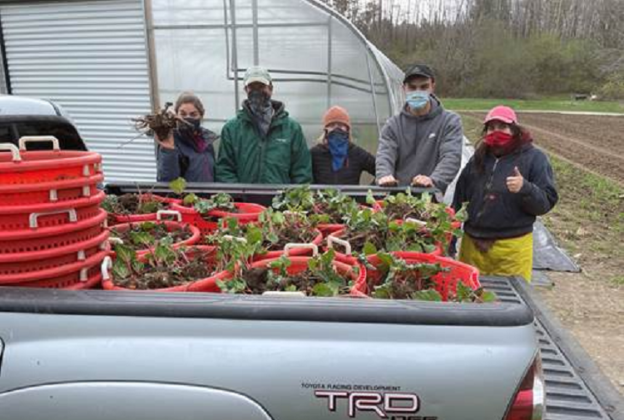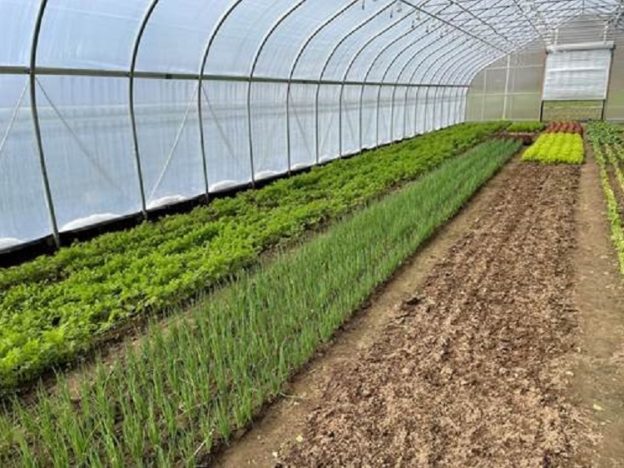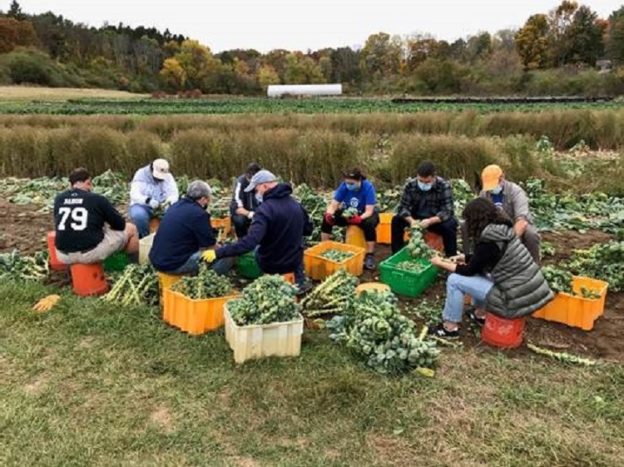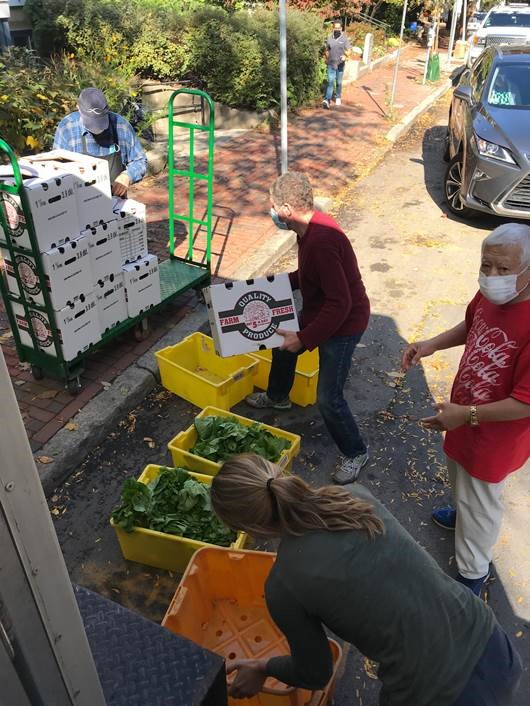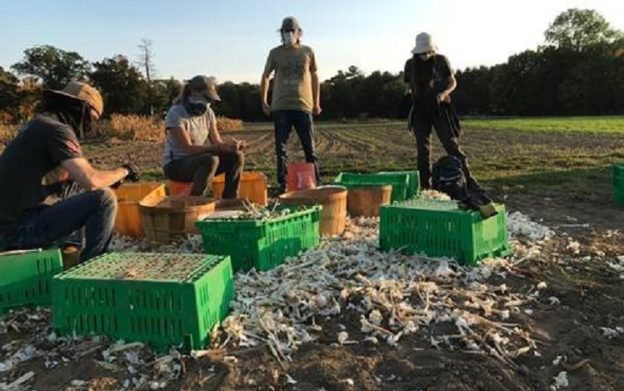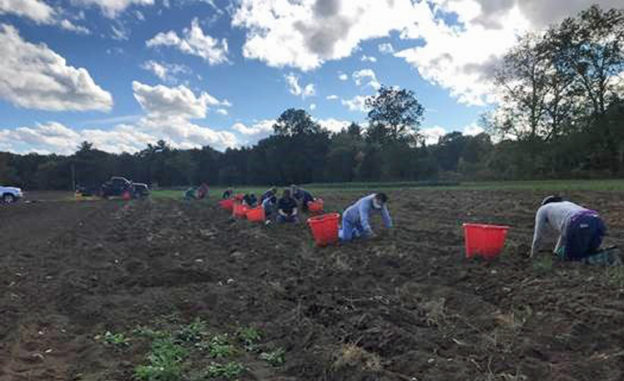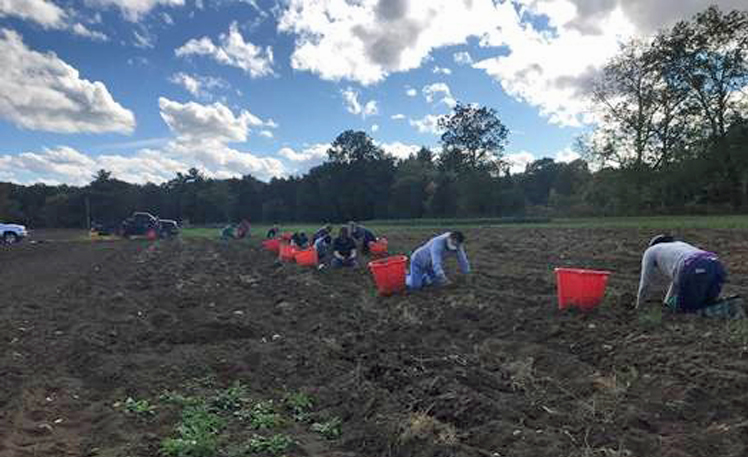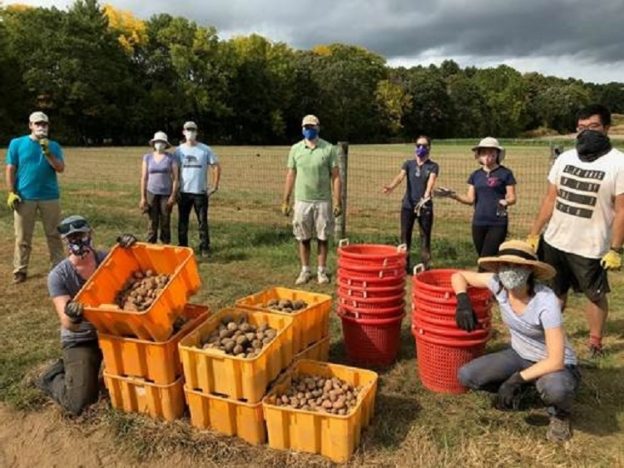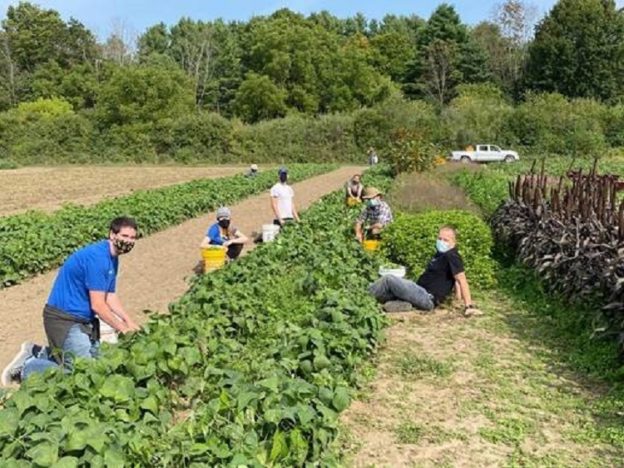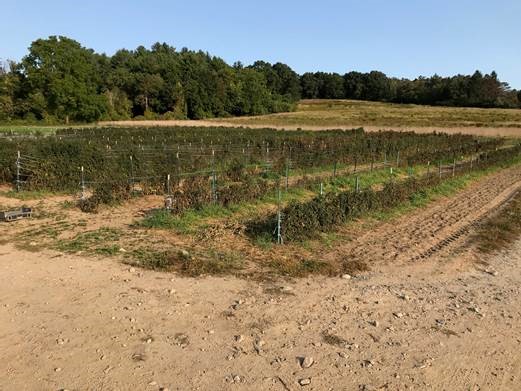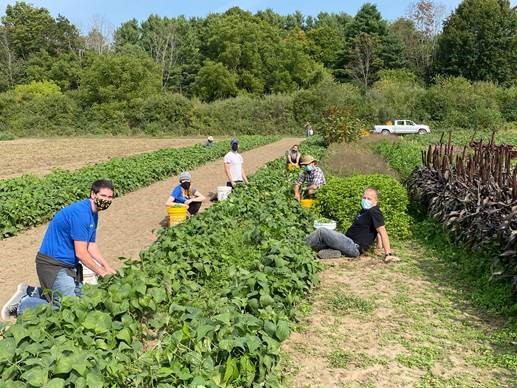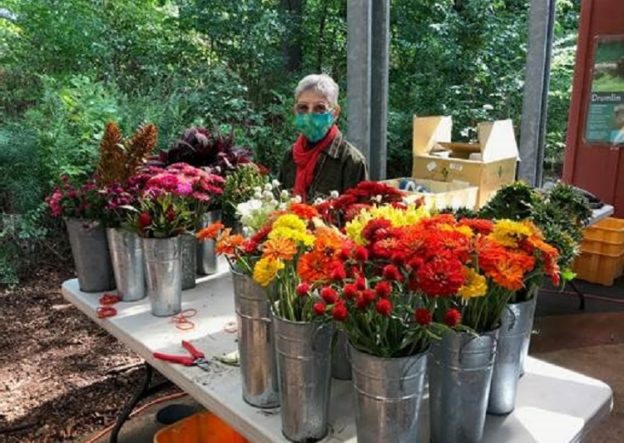All went well during the first spring CSA farm share distribution thanks to the teamwork of the Admissions, Property, and Crops staff teams. CSA coordinator Gabrielle, and farmers Greg and Caroline, did a nice job figuring it out as they went through the process for the first time. And we were lucky to have the experienced help of volunteers Sheila, Nina, Sandra, and Ashleigh, all of who helped package shares last season. In their shares, CSA members received carrots from the hoop house, assorted greens from the field, and the spring delicacy green garlic. This week we’re looking forward to the first head lettuce and kohlrabi harvest of the year.
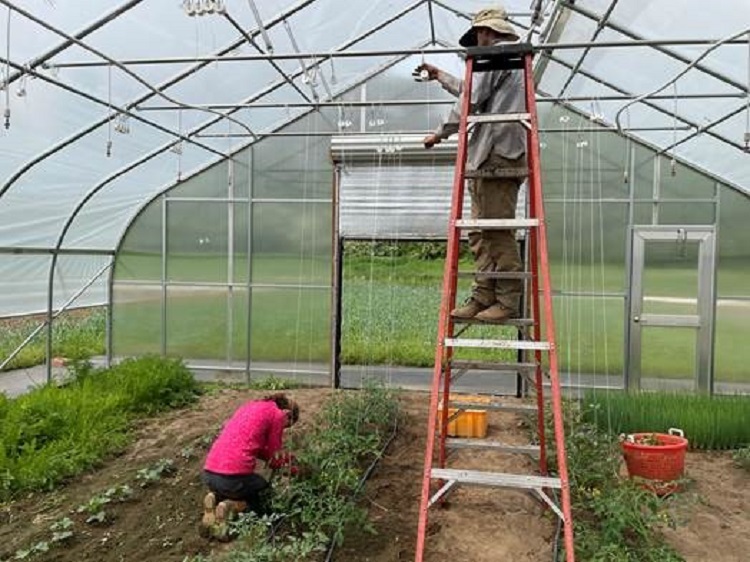
It’s very dry in the fields after several days of high heat and no rain for the past fourteen days and counting. We’re hoping to catch a storm this Wednesday afternoon. We continue to plant with the water wheel—the implement carried on the back of the tractor that delivers a little bit of water at the moment of transplanting. After that, we rely on the rain alone and the soil-improving effects of our management practices like composting, cover-cropping and fallowing. This past week, volunteers returned to the fields for the first time this season and helped us transplant seedlings on three separate afternoons—community volunteers planted cabbage and cauliflower on Tuesday, Starbucks volunteers planted broccoli and sunflowers on Thursday, and on Friday, volunteers from Engie helped us weed onions and transplant even more broccoli. Thanks all for helping us keep pace!
This past Saturday morning in the hoop house, we pruned the cherry tomatoes to increase air circulation, and then we put on the first clips for support. You can see Sean unspooling the line and Caroline attaching the clip underneath a sturdy leaf about halfway up the stalk. Hopefully, all those flowers will be delicious tomatoes by early July! Perhaps you’ve noticed the improved condition of the roads in the farm fields and around the farm yard too. Thanks to Metro West Sanctuaries Directot Renata for your amazing work writing and securing this second round of grants to make these necessary upgrades!
Your Farmers


